[70th Anniversary of International Student Education] Part 1: The Prequel of International Education at PKU
Jul 12, 2022
Editor’s note: The year 2022 marks 70 years since the inception of International Education at Peking University in New China. The history can be traced back to 1952 when 14 international students came to PKU through the “Special Chinese Language Course for Exchange Students in Eastern Europe”. Up till today, PKU has been continuously enhancing its professional impact and expanding its global reach, promoting internationalization in China’s tertiary education. More than 1.1 million international students have hailed from 195 countries to study on the Yanyuan campus, enrolling in a wide range of programs. By promoting cultural diplomacy, exchanges between students of different nationalities facilitate cross-cultural interactions with hopes of building a Community of Shared Future for Mankind .
To mark this special occasion, the Office of International Relations and PKU News jointly publish the special column “70 years of PKU International Students” to put the spotlight on the history and achievements of International Education at PKU, and to craft a shared future for China and the world.
1909—1949:Thriving in adversity
Towards the end of the 19th century, educated Chinese intellectuals proposed vigorous reforms to strengthen the country’s defences against foreign intrusion. The Imperial University of Peking (later renamed Peking University) was founded during the Hundred Days' Reform of 1898 . The earliest admissions records of international students to a Chinese education institution traced back to then. In this article, we will be looking back on the early history of PKU, and how it overcame all odds despite the challenging times and remained welcoming of international students.
1909—1912:Study tours of Russian language scholars in PKU
According to the Selected Archives of Metropolitan University (京師大學堂檔案選編), the ambassador of Russia to China sent an application to the Ministry of Foreign Affairs of the Qing Government on the 28th of April in 1909. The official document aimed to grant four students from Vladivostok the chance to visit PKU on a study tour.
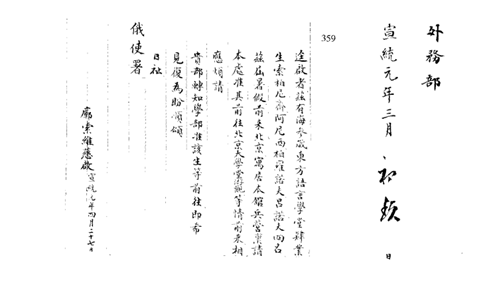 The official document by the ambassador of Russia to China (1909)
The official document by the ambassador of Russia to China (1909)
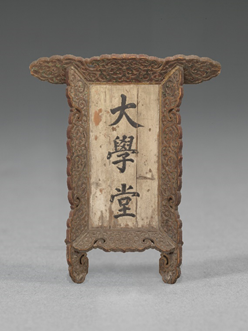 The inscribed board of Imperial University of Peking
The inscribed board of Imperial University of Peking
From June to November 1909, a group of students and teachers from Russia visited Peking University and attended Classical Philosophy & History courses . They mainly studied Chinese history and classic works of Confucianism.
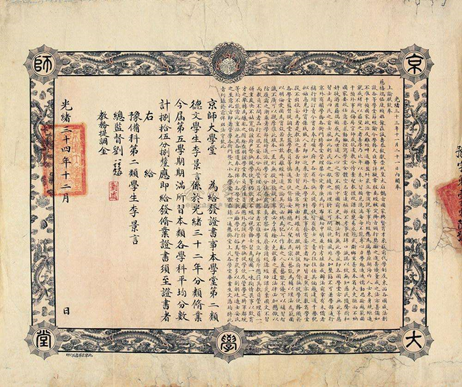 The study certificate of Imperial University of Peking
The study certificate of Imperial University of Peking
In December 1909, Emperor Puyi (the eleventh and final Qing dynasty monarch) permitted foreigners to study classical works of Confucianism in China. This officially allowed foreigners to enter Chinese universities. Subsequently, this privilege was also extended to the British and American students. To accommodate the growing international student population, the school began building dormitories for foreign guests.
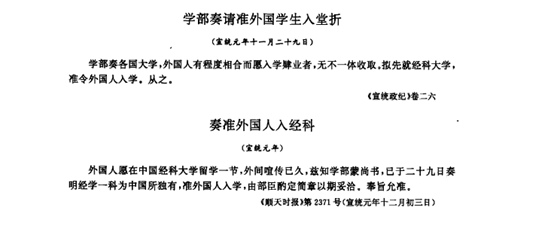 The official document of the permitting foreigners into Chinese universities (December, 1909)
The official document of the permitting foreigners into Chinese universities (December, 1909)
In the early years, the Chinese government and the Imperial University of Peking both adopted an open attitude toward international students who came to China. Although the Hundred Days' Reform of 1898 was a short-lived reform, the establishment of the Imperial University of Peking still emblemed the paradigm shift of the Chinese education system from a reclusive to an open and welcoming one.
1912—1938:Limited international students mainly from East Asia
When the Republic of China (ROC) was declared in 1912, the Imperial University of Peking changed its name to Peking University (PKU). Renowned educators like Yan Fu and Cai Yuanpei introduce modern and scientific education reforms.
According to historical records during this period, the registered international students were mainly from East Asian countries like Japan and Thailand. Among them, Takeshiro Kuraishi was one of the international students who studied at Peking University from 1928 to 1930. He later became the Honorary Professor of the University of Tokyo as a scholar of Chinese literature. Like many Japanese students who studied in China during this period, he had intricate ties with PKU and China.
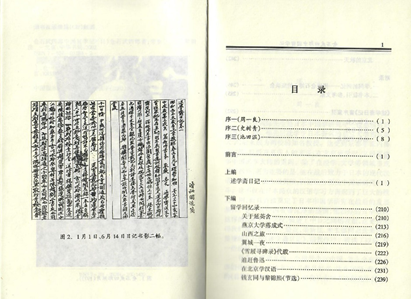 Journal entries about study experiences in China by Takeshiro Kuraishi
Journal entries about study experiences in China by Takeshiro Kuraishi
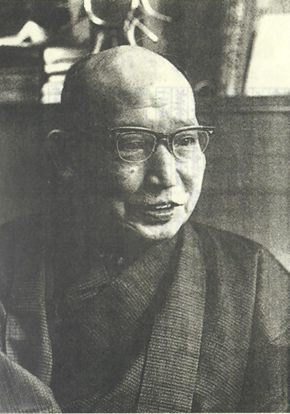 Takeshiro Kuraishi (1973)
Takeshiro Kuraishi (1973)
These East Asian international students mainly came to China to study Chinese classical philosophical thoughts and history. To attract more international students, the government of ROC then implemented policies to provide medical insurance and scholarship grants for international students.
1938—1949:Open-mindedness during the turbulent period in history
The outbreak of the Second Sino-Japanese War was a difficult phase for PKU. In 1937, Peking University was relocated to the southwestern city of Changsha and formed the Changsha Temporary University along with Tsinghua University and Nankai University. In 1938, the three schools relocated to Kunming, and formally renamed its merger as National Southwestern Associated University.
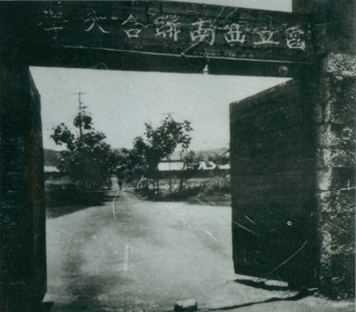 The school gate of the National Southwestern Associated University
The school gate of the National Southwestern Associated University
Allowing international students in PKU was once again interrupted by the war, leaving no record of international students. However, the open-mindedness of PKU was exemplified in the welcoming of overseas Chinese students, which aligns with the aim of preserving and passing down the traditional Chinese culture. Under the governance of ROC, there were also bilateral education programs with various countries such as Italy, Germany, India, Turkey and the United States.
 Newspaper reports on American students studying in China (January, 1948)
Newspaper reports on American students studying in China (January, 1948)
After the Japanese surrender in World War II, Peking University moved back to Beijing in 1946. Despite facing political unrest, the Chinese government and universities still adopted a welcoming policy toward international students. The international education policymaking was incentivized by strategic priorities to encourage international students to study in China.
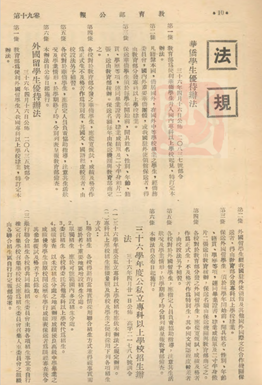 Newspaper report on the incentives for international students (1947)
Newspaper report on the incentives for international students (1947)
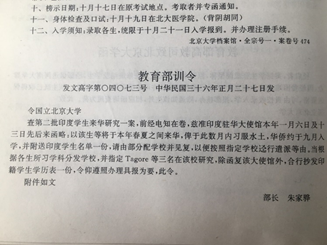 Research on Indian students studying in Peking University by the Ministry of Education (1947)
Research on Indian students studying in Peking University by the Ministry of Education (1947)
After the implementation of the Fulbright Program in the US to promote cultural diplomacy, other countries such as South Korea and India also follow suit by sending their students to study in China. In April 1947, China welcomed the first batch of international students from both South Korea and India.
From 1909 to 1949, this critical period has seen PKU undergo developments and transformation from the initial establishment of Imperial University of Peking, to the campus relocation and merger as National Southwestern Associated University, before finally metamorphosizing into Peking University as we know it today. Spearheading contemporary reforms in China in the last century, PKU retained its open attitude toward international students and encouraged cross-cultural exchanges. The establishment of the People's Republic of China in 1949 marked the beginning of a brand new chapter for PKU, as the school embraced modern reforms which reinvigorated international education to advance with the times.
Written by: Feng Shiqi
Edited by: Shi Xinyao
Source: PKU News (Chinese)









